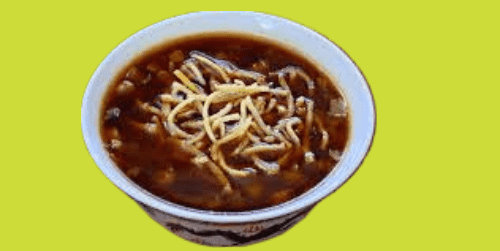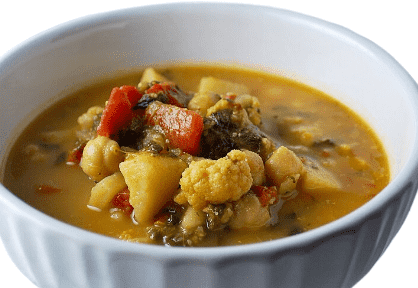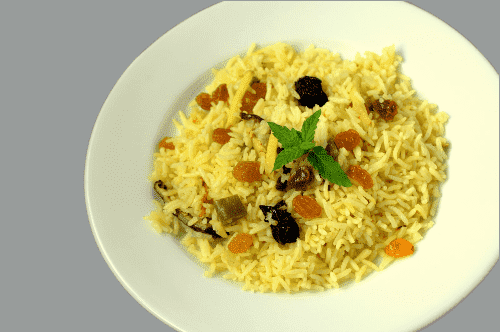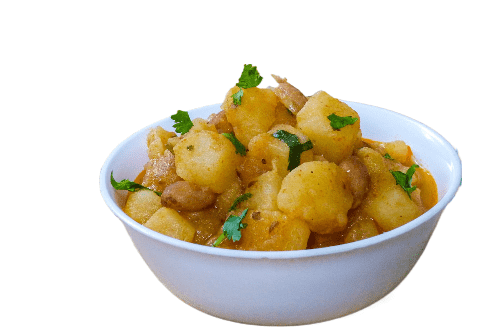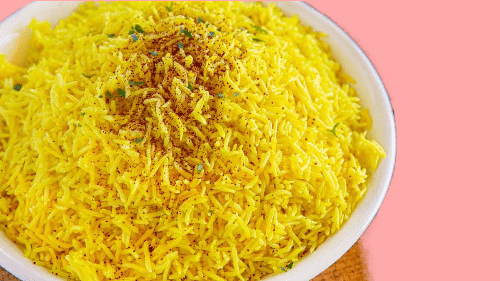Best Naan
Introduction :
Naan is a well-known flatbread with origins in South Asia, particularly India and Pakistan. Soft, pillowy, and slightly chewy, naan is traditionally cooked in a tandoor (a clay oven), but it can also be made at home using a skillet or oven. Whether paired with curries, kebabs, or enjoyed with a dollop of butter, naan is a versatile bread that elevates any meal. In this guide, we’ll explore the history of naan, delve into the techniques that make it perfect, and provide a comprehensive recipe with variations and troubleshooting tips to help you achieve restaurant-quality naan right in your kitchen.
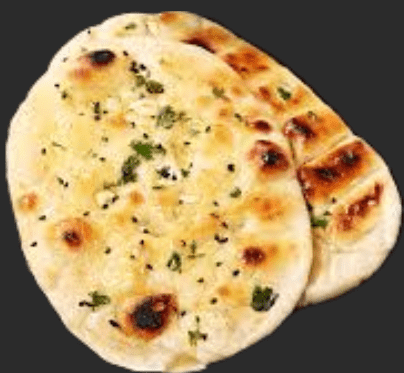
A Brief History :
It has a long and storied history that dates back over 2,500 years. The name “naan” itself comes from the Persian word for bread. Originally introduced to India by the Mughals, naan was a luxury food, reserved for royalty due to the costly ingredients and the specialized equipment needed to make it. Over time, naan evolved and became a staple in South Asian cuisine, beloved for its soft texture and the ability to soak up rich, flavorful sauces.
What Makes Naan Special?
Naan’s unique texture comes from a combination of ingredients and cooking methods. Traditional naan dough is made with all-purpose flour, yogurt, water, and yeast, resulting in a soft, elastic dough that rises beautifully. The high heat of a tandoor oven is key to achieving the signature bubbles and charred spots on the naan. At home, replicating this effect requires some adjustments, but with the right approach, you can achieve great results.
Ingredients Breakdown :
Before jumping into the recipe, let’s go through the key ingredients that make naan so special:
- Flour: All-purpose flour is typically used for naan, providing the right balance of gluten, which is essential for the soft, slightly chewy texture.
- Yogurt: Yogurt adds a subtle tanginess and helps to keep the naan soft. It also aids in fermentation, giving the dough a pleasant flavor.
- Yeast: Yeast is crucial for leavening, creating the airy, bubbly texture. Instant or active dry yeast works well in this recipe.
- Water and Milk: A combination of water and milk helps to hydrate the dough, making it tender. Milk adds a slight richness that enhances the flavor.
- Sugar: A small amount of sugar feeds the yeast and helps with browning, creating a beautifully golden naan.
- Salt: Salt is essential for flavor and balance.
- Ghee or Butter: Traditionally, naan is brushed with ghee, a type of clarified butter, which adds a rich, buttery flavor. You can also use regular butter or even olive oil as a substitute.
The Perfect Naan Recipe :
Now that we’ve explored the key ingredients, let’s dive into the step-by-step process of making naan at home.
Ingredients:
- 3 ½ cups all-purpose flour (plus extra for dusting)
- 1 teaspoon salt
- 1 teaspoon sugar
- 1 teaspoon instant yeast (or active dry yeast)
- ½ cup plain yogurt
- ¼ cup warm milk
- ½ cup warm water (adjust as needed)
- 2 tablespoons ghee or melted butter (plus extra for brushing)
- Optional: minced garlic, fresh herbs (such as cilantro), sesame seeds, nigella seeds for topping
Instructions:
Prepare the Dough :
- In a expensive bowl, blend the flour, salt, sugar, and yeast.
- Include the yogurt, warm milk, and half of the warm water. Mix the ingredients using your hands or a wooden spoon until the dough starts to come together.
- Gradually add more water as needed to form a soft, slightly sticky dough. The exact amount of water may vary depending on the humidity and the flour you are using.
- Knead the dough for about 8-10 minutes on a floured surface until it is smooth and elastic. You can also use a stand mixer with a dough hook attachment for convenience.
Let the Dough Rise :
- Put the mixture in a delightedly oiled bowl, cover it with a soggy cloth or plastic wrap, and let it rise in a warm place for 1-2 hours, or until it has doubled in size. The rising time can vary based on room temperature.
Shaping of it :
- Once the batter has risen, punch it down to discharge the air.
- Divide the dough into 8 equal portions. Shape each portion into a ball and cover them with a cloth to prevent drying.
- On a lightly floured surface, roll each dough ball into an oval shape, about ¼ inch thick. You can make them thicker if you prefer a more bread-like texture.
Cooking of it :
- Preheat a cast-iron skillet or heavy-bottomed pan over medium-high heat. A cast-iron skillet retains heat well and gives the naan a nice char.
- Brush one side of the rolled-out naan with water. This helps the naan stick to the skillet and creates steam, mimicking the environment of a tandoor.
- Place the wet side of the naan onto the hot skillet. Cover the dish with the top to trap the steam. Cook for around 1-2 minutes, until bubble shape on the surface.
- Flip the naan using tongs and cook the other side until you see charred spots, about 1-2 minutes more.
- Remove from the skillet and immediately brush with melted ghee or butter. If you want to add toppings, sprinkle them on at this stage.
Optional Toppings :
- Garlic : Brush the cooked naan with melted ghee mixed with minced garlic.
- Herb : Sprinkle fresh chopped cilantro, parsley, or dill over the naan after brushing with butter.
- Cheese : Add grated cheese in the center of the dough before rolling it out, sealing the edges well to prevent leakage during cooking.
Tips for Perfect :
- High Heat is Key: Cooking naan at high heat helps to replicate the effect of a tandoor oven, resulting in the characteristic charred spots.
- Dough Consistency: The dough should be soft but not overly sticky. A slightly tacky dough yields softer naan.
- Don’t Overwork the Dough: Knead the dough just until it’s smooth and elastic. Overworking can make the naan tough.
- Cover While Rising: Covering the dough with a damp cloth helps to prevent it from drying out during the rise.
- Use a Heavy Pan: A cast-iron skillet is ideal for cooking it as it retains heat well, giving the naan a lovely charred look and flavor.
- Experiment with Toppings: Don’t hesitate to experiment with different herbs, seeds, or spices to add a personal touch to your naan.
Variations :
- Whole Wheat : Replace half of the all-purpose flour with whole wheat flour for a slightly healthier version.
- Stuffed : Fill the naan with a variety of fillings, such as mashed potatoes, spiced paneer, or ground meat.
- Butter : Brush the naan with butter instead of ghee for a slightly different flavor.
- Peshawari : A sweet version made with a stuffing of dried fruits, nuts, and coconut.
- Roghni : Topped with sesame seeds and a bit of egg wash, this naan is richer and more flavorful.
Common Mistakes and Troubleshooting :
- Its is Too Dense: This usually occurs if the dough didn’t rise properly or wasn’t kneaded enough. Ensure your yeast is active and the dough is soft and well-kneaded.
- Burnt Spots: If the skillet is too hot, the naan may burn before it cooks through. Adjust the heat as necessary.
- It Sticks to the Pan: Make sure the skillet is well-preheated, and brush the dough with water before placing it in the pan to help it stick initially.
- Its Dry : Overcooking or not brushing with ghee can lead to dry it. Always brush on it very immediately after cooking.
Serving Suggestions :
It is best served fresh and hot. Pair it with your favorite curries, kebabs, or stews. It’s also perfect with a bowl of dal or just dipped in some spiced yogurt. For an indulgent treat, try serving it with a dollop of butter and a sprinkle of sea salt.
Conclusion :
Making it at home might seem daunting at first, but with a little practice, you can master this beloved flatbread. The key is in the details: a soft dough, high heat, and a generous brush of ghee. Whether you stick to the classic recipe or explore creative variations, homemade it will add an authentic touch to your meals. Try it today, and bring the flavors of a tandoor right into your kitchen!
